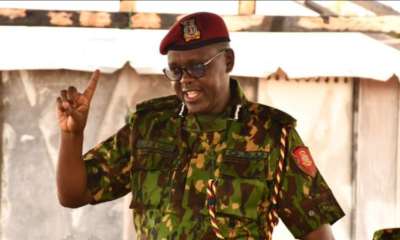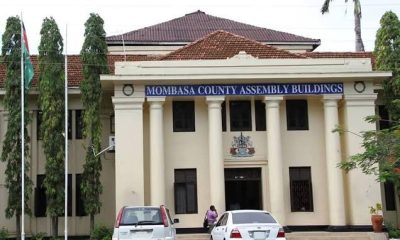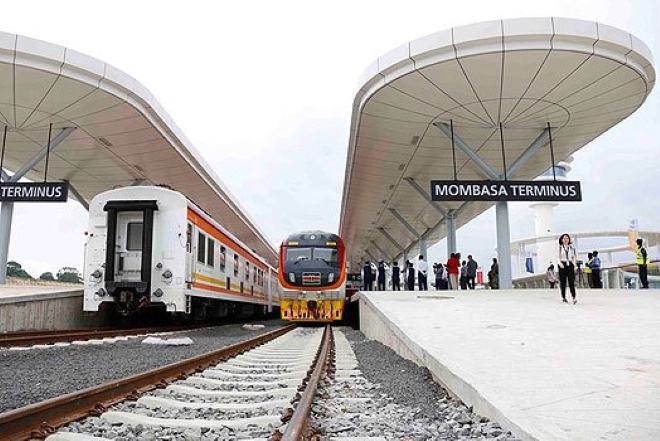The Vision 2030 delivery Secretariat plans to increase the number of projects under PublicPrivate Partnerships (PPPs) as sources of funds dwindle following, among other reasons, the outbreak of the Covid-19 pandemic.
The PPPs, the Secretariat said in a statement, will accelerate the development of the projects in the journey to make Kenya a newly industrialized, middle income country by 2030. Under the blueprint, Kenya plans to spend an estimated sum of USD 60 Billion (Sh6 trillion) to put up massive infrastructure whilst relying heavily on PPP arrangements to achieve that goal.
Among the on-going flagship projects expected to make a significant contribution towards achieving the 10 per cent economic growth target are the Lamu Port-South Sudan-EthiopiaTransport corridor LAPPSET, the Konza Techno City, modernisation of aviation facilities, expansion of the port of Mombasa, and the Standard Gauge Railway (SGR).
Significant progress has been made over the years in line with our Medium Term Plans. The pace of completion has, however, been hampered partly, by new developments beyond our control including the Covid-19 pandemic that has negatively impacted economic growth across the world,” said Vision 2030 Delivery Secretariat, Director General, Kenneth Mwige. Slow revenue growth in the 2019/20 fiscal year, compared to 2018 compounded by drought during first half of the year, followed by high rainfall in the second half have resulted to budget restrictions by ministries, State departments and government agencies thus stymying the implementation of key projects.
According to the World Bank, one of the main advantages of PPPs is that it reduces the burden on taxpayers having to pay for a project, especially where the private sector finances the whole project. The government and the private sector will be able to share and allocate risks amongst themselves. By using PPPs, corruption and wastage can be significantly reduced since both partners are held accountable for the project.
6 Trillion Shillings from PPP Among the on-going flagship projects expected to make a significant contribution towards achieving the “Significant progress has been made over the years in line with our Medium Term Plans. The pace of completion has, however, been hampered partly, by new developments beyond our control including the Covid-19 pandemic that has negatively impacted economic growth across the world,” said Vision 2030 Delivery Secretariat, Director General, Kenneth Mwige. Slow revenue growth in the 2019/20 fiscal year, compared to 2018 compounded by drought during first half of the year, followed by high rainfall in the second half have resulted to budget restrictions by ministries, State departments and government agencies thus stymying the implementation of key projects. According to the World Bank, one of the main advantages of PPPs is that it reduces “Unprecedented containment measures scaled down sector wide activities, resulting in slow economic performance. This reality and the requisite adjustments such as change in the tax laws affected revenue targets, undermined resource mobilisation for implementation of Vision 2030 and the ‘Big Four’ Agenda,” said Mwige. T he government is required to fund 30 per cent of the projects under Vision 2030 with private sector given a window to finance 70 per cent on project costs. And with a National Treasury stretched to its limits, the secretariat intends to exploit this provision and sign up as many PPPs as possible. Other factors that have slowed down implementation progress include inadequate funding, and weak legislation especially in social sectors and the COVID-19 Pandemic, impacting delivery of flagship projects towards end of third quarter (Q3) till the end of the year.
Already, Kenya, through its Public Private Partnership Unit and the Kenya National Highways Authority (KeNHA), executed Africa’s largest ever PPP through an agreement with the French company Rift Valley Highway, for the development of the Nairobi-Nakuru-Mau Summit Highway project.

The Lapsset project will turn Lamu into a transportation hub with immense benefits to the country and region
The agreement was signed in Paris, France on September 30, 2020 in the presence of President Uhuru Kenyatta and his French counterpart Emmanuel Macron.
“The financial close of the project is expected to occur by the end of 2021 and will cost about €1.3 billion (Sh170b), transforming the existing trunk road into a 175-kilometre dual two-lane motorway,” the statement read.
Construction works are scheduled to last 42 months.
Similarly, the construction of three berths at Lamu Port, fully financed by the government is on-going with berth one already completed. A total of 32 deep sea berths are expected to be put up at a cost of Sh500 Billion (USD 5 Billion).
“The remaining 29 berths will be developed by private sector investors. The Secretariat projects the port to be operational by October 2021.”
Transport in Nairobi is also set to get a major boost with the ongoing construction of the Sh62 billion, 27km Nairobi Expressway, expected to be completed by December 2022.

Transportation in Nairobi is also set to get a major boost with the ongoing construction of the Sh62 billion, 27km Nairobi Expressway.
“As National government puts more effort to boost economic recovery through the development of the Post COVID-19 Economic Stimulus Programme (PC-ESP), our focus will be to push for more PPPs to accelerate pace of delivery in flagship projects,” Mwige said.
The Secretariat said modernisation and expansion of aviation facilities at Jomo Kenyatta, Moi, Kisumu and Isiolo International Airports and selected airstrips across the country is still ongoing and will require PPP arrangements to improve the facilities to required standards.
So far, Key achievements made under the flagship projects over the second and Third Medium Term Plan include completion of berths 19, 20 and 21 of Mombasa Port that were commissioned by President Uhuru in 2016.
Phase 1 and 2 of the SGR project have also been completed and commissioned.
Completed mega road projects include, Thika Super Highway, 525Km Isiolo-Marsabit-Moyale road, rehabilitation of Northern Corridor, Nairobi’s northern, eastern and southern by-passes, Athi-River-Namanga road and 144km Voi-Mwatate-Taveta/Holili border road.
“Total length of paved roads has more than doubled to 21,000 kilometres from 9,600 kilometres in 2012,” the Secretariat said.
At Konza Technopolis City, construction of office block is complete, as Phase 1 of Konza National Data Centre and Smart City facilities near completion (97 per cent complete).

The REREC Garissa Solar Plant added 50MW of clean power to the national grid
“The Tatu City Industrial Park development is going on at fast pace, and already hosts 50 Kenyan and international firms that are open or developing. Phase Two of the development is already in motion. Among resident companies are Cooper K-Brands, Dormans, Maxam, Copia, Africa Logistics Properties, Chandaria Industries, Kim-Fay and Davis & Shirtliff,” the Secretariat added.
Due to their high visibility, many people have come to associate Vision 2030 with only infrastructural projects. However, the blueprint has been a silent player across all sectors. Installed electricity capacity, for example, has increased from 1690MW to 2,818MW seeing the number of households connected to the national grid rise from 2.3 million in 2012 to 7.6 million.
“Other major achievement over the period is on generation of clean energy with the addition of 442.7MW to the grid of which 310MW was from Lake Turkana Wind Power; 82.7MW was from Olkaria V Unit 1 and 50MW from REREC Garissa Solar Plant.
Latest Data from Vision 2030 Delivery Secretariat shows key economic sectors, Agriculture, Tourism and Manufacturing have recorded notable growth since the launch of the country’s long-term development plan in 2008.
Tourism earnings have grown from Sh65 billion in 2007 to Sh164 billion in 2019 following increased investments in hospitality facilities that have doubled number of available hotel beds per night to current 29.7 million.

The Standard Gauge Railway
“Total Agricultural Output at current prices is valued at Sh465.7 billion compared to Sh176 billion in 2007. And despite slow growth in manufacturing contribution to economy, it has been employing over 300,000 Kenyans every year with sales from EPZ companies more than doubling over to Sh68.5 billion compared to Sh29 billion in 2007.”
Operationalisation of Special Economic Zones Act 2015, establishment of Special Economic Zones Authority and suitable land in Mombasa (2000KM2), Kisumu (700KM2) and Lamu (700KM2) will spur activities in this sector.
“We expect with increased investor activities in the near short-term as we pursue more PPPs and completion of key infrastructure projects, we will start realising significant output from these sectors to boost the general economy and meet key targets within timelines,” said Mwige.
Construction of Industrial Research Laboratories in Kisumu is complete while the one in Nairobi’s South B is at early stages in line with plans to transform KIRDI into a world class Research Institute, he added.
Mwige said prospects are still high to reach the 10 per cent target for annual economic growth and transform Kenya into a newly industrialising globally competitive and middle-income country providing a high quality of life to all its citizens by 2030.
Kenya Insights allows guest blogging, if you want to be published on Kenya’s most authoritative and accurate blog, have an expose, news TIPS, story angles, human interest stories, drop us an email on [email protected] or via Telegram

 Investigations2 weeks ago
Investigations2 weeks ago
 Investigations2 weeks ago
Investigations2 weeks ago
 Investigations2 weeks ago
Investigations2 weeks ago
 Investigations1 week ago
Investigations1 week ago
 Opinion2 weeks ago
Opinion2 weeks ago
 Investigations1 week ago
Investigations1 week ago
 Investigations1 week ago
Investigations1 week ago
 Business1 week ago
Business1 week ago




















